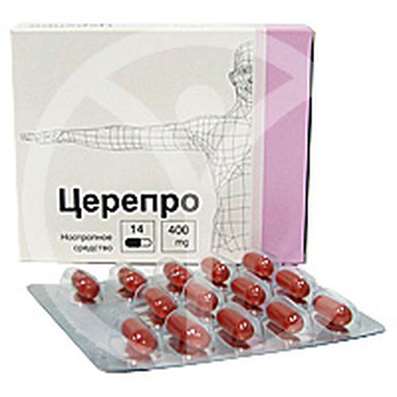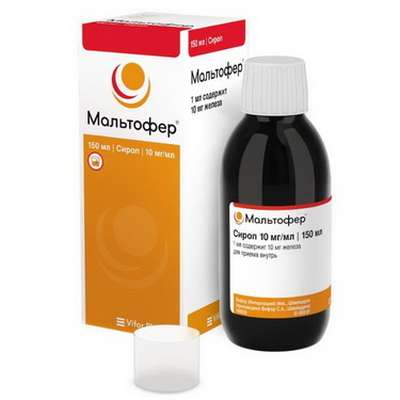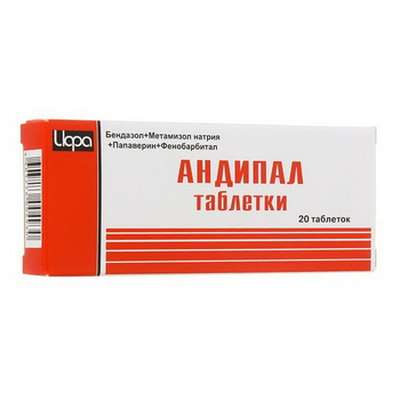Instruction for use: Roncoleukinum
I want this, give me price
Dosage form: Solution for infusion and subcutaneous administration; Substance-solution
Active substance: Interleukinum-2 humanum recombinans
ATX
L03AC Interleukins
Pharmacological group:
Cytokine [Interleukins]
The nosological classification (ICD-10)
A16.2 Tuberculosis of lungs without mention of bacteriological or histological confirmation: Disseminated tuberculosis; Caseous pneumonia; Pulmonary tuberculosis; Pulmonary tuberculosis; Tuberculosis of the lung chronic multidrug-resistant; Pulmonary tuberculosis; Fulminant tuberculosis of the lungs; Chronic tuberculosis of the lungs; Disseminated tuberculosis of the lungs
A41.9 Septicemia, unspecified: Septic diseases; Septicemia / bacteremia; Toxico-infectious shock; Endotoxin shock; Bacterial septicemia; Bacterial infections of severe course; Generalized infections; Generalized systemic infections; Infections generalized; Wound sepsis; Septiccopymia; Septic-toxic complications; Septicemia; Septic conditions; Septic shock; Septic condition; Septic shock
A49 Bacterial infection of unspecified site: Bacterial infection; Infectious diseases
C64 Malignant neoplasm of kidney, other than renal pelvis: Wilms tumor; Kidney Cancer; Metastatic Renal Cell Carcinoma; Renal carcinoma; Inoperable kidney carcinomas; Metastatic kidney carcinoma; Metastatic Renal Cell Carcinoma; Wilms tumor; Wilms swelling; Adenomyosarcoma; Adenomyocystosarcoma; Adenosarcoma of the kidney; Kidney Cancer; Common renal cell carcinoma; Nephroblastoma; Nephroma; Embryonal nephroma; Recurrent carcinoma of the kidney; Birch-Hirschfeld Tumor; Common renal cell carcinoma; Tumors of the kidney
D81 Combined Immunodeficiencies: Duncan Syndrome; Combined immunodeficiency; Severe combined immunodeficiency (KID)
D83 Conventional Variable Immunodeficiency: Total Variable Immunodeficiency; Immunodeficiency variable
J18 Pneumonia without specification of pathogens: Alveolar pneumonia; Community-acquired pneumonia atypical; Community-acquired pneumonia non-pneumococcal; Pneumonia; Inflammation of the lower respiratory tract; Inflammatory lung disease; Shared pneumonia; Respiratory and lung infections; Infections of the lower respiratory tract; Cough with inflammatory diseases of the lungs and bronchi; Croupous pneumonia; Nosocomial pneumonia; Exacerbation of chronic pneumonia; Acute community-acquired pneumonia; Acute pneumonia; Focal pneumonia; Pneumonia abscessing; Pneumonia bacterial; Pneumonia croupy; Pneumonia of focal; Pneumonia with difficulty in sputum discharge; Pneumonia in AIDS patients; Pneumonia in children; Septic pneumonia; Chronic Obstructive Pneumonia; Chronic pneumonia; Lymphoid interstitial pneumonia
K65.0 Acute peritonitis: Subdiaphragmatic abscess; Abdominal abscess; Abscess of abdominal cavity; Abscess of intraperitoneal; Abscess of abdominal organs; Intraperitoneal abscesses; Intraperitoneal abscess; Acute purulent-inflammatory process of the abdominal cavity; Acute diffuse peritonitis; Intraabdominal abscess; Subdiaphragmatic abscess
K85 Acute pancreatitis: Acute pancreatitis; Pancreatitis; Pancreatitis haemorrhagic; acute Pancreatitis; Sepsis pancreatogenic; Acute necrotizing pancreatitis; edematous pancreatitis
M86 Osteomyelitis
N71 Inflammatory diseases of the uterus other than the cervix: Intrauterine infections; Inflammatory diseases of female genitalia; Inflammatory diseases of female genital organs; Infection of the genitals; Chronic endometriometritis; Chronic inflammatory disease of the uterus; Endometritis; Endometriometry
O85 Postpartum sepsis: Postpartum infections; Pelvioperitonitis; Postpartum anaerobic sepsis; Puerperal fever
P36.9 Unspecified bacterial sepsis, unspecified: Infections in newborns; Sepsis in newborns; Sepsis in infants
T30 Thermal and chemical burns of unspecified site: Pain syndrome with burns; Pain in burns; Pain with burns; Sluggishly healing post-burn wounds; Deep burns with a wet scab; Deep burns with abundant compartments; Deep burn; Laser burn; Burn; Burn of rectum and perineum; Burn with mild exudation; Burn disease; Burn injury; Superficial burn; Superficial burn of I and II degree; Superficial skin burns; After-burn trophic ulcer and wound; Post-burn complication; Loss of fluid in burns; Sepsis burn; Thermal burns; Thermal skin lesions; Thermal burn; Trophic after-burn ulcers; Chemical burn; Surgical burn
T79.3 Post-traumatic wound infection, not elsewhere classified: Inflammation after surgery and trauma; Inflammation after trauma; Secondary infection of skin and mucous membrane damage; Deep Wounds; Purulent wound; Purulent-necrotic phase of wound process; Purulent-septic diseases; Purulent Wounds; Purulent wounds with the presence of deep cavities; Granulating wounds of small size; Disinfection of purulent wounds; Wound infections; Infections wound; Infection of wounds; Infected and non-healing wound; Infected postoperative wound; Infected wound; Infected Skin Wounds; Infected burns; Infected Wounds; Suppurating postoperative wounds; Extensive purulent-necrotic process of soft tissues; Burn infections; Burn infection; Perioperative infection; Poorly healing infected wound; Postoperative and purulent-septic wound; Postoperative wound infection; Wound infection; Wound botulism; Wound infections; Wounds of purulent; Wounds infected; Reinfection of granulating wounds; Sepsis posttraumatic
Composition
Solution for infusion and subcutaneous administration 1 ml
active substance: Interleukin-2 human recombinant 0.25 mg; 0.5 mg; 1 mg
(Equivalent to 250000/500000/1000000 IU, respectively)
Auxiliary substances: sodium lauryl sulfate - 2,5 (5/10 mg; Mannitol - 12.5 / 25/50 mg; Dithiothreitol - 0.08 / 0.08 / 0.08 mg; Ammonium bicarbonate - 0.79 (0.79) / 0.79 mg; Water for injection - up to 1 ml
Description of dosage form
Solution: clear, colorless or light yellow liquid.
Characteristic
The active component of the preparation - recombinant human IL-2 (rIL-2) - is a complete structural and functional analogue of endogenous IL-2, isolated from cells of the recombinant yeast strain Saccharomyces cerevisiae; Is represented by the restored form of the molecule.
Pharmachologic effect
Mode action - Immunomodulating.
Pharmacological (immunobiological) properties
IL-2 is produced by a subpopulation of T-lymphocytes (T-helpers I) in response to antigenic stimulation.
Synthesized IL-2 acts on T-lymphocytes, enhancing their proliferation and subsequent synthesis of IL-2.
The biological effects of IL-2 are mediated by its binding to specific receptors represented on various cellular targets.
IL-2 has a direct effect on the growth, differentiation and activation of T- and B-lymphocytes, monocytes, macrophages, oligodendroglial cells, Langerhans cells. From its presence, the development of cytolytic activity of natural killers and cytotoxic T-lymphocytes depends. IL-2 causes the formation of lymphokine-activated killers and activates tumor-filtering cells.
Expansion of the spectrum of the lysis effect of effector cells causes the elimination of a variety of pathogenic microorganisms, infected and malignant cells, which provides immune protection directed against tumor cells, as well as pathogens of viral, bacterial and fungal infections.
Indications for the preparation Roncoleukinum
In adults in the complex therapy of the following conditions and diseases:
Usual variable immunodeficiency;
Combined immunodeficiency;
Acute peritonitis;
Acute pancreatitis;
osteomyelitis;
Endometritis;
Severe pneumonia;
sepsis;
Postpartum sepsis;
pulmonary tuberculosis;
Generalized and severe localized infections;
Infected thermal and chemical burns;
Disseminated and locally advanced forms of renal cell carcinoma.
At children from a birth at following conditions and diseases:
Usual variable immunodeficiency;
Combined immunodeficiency;
Acute peritonitis;
Acute pancreatitis;
osteomyelitis;
Severe pneumonia;
Bacterial sepsis of newborns;
sepsis;
Generalized and severe localized infections.
Contraindications
Hypersensitivity to IL-2 or any component of the drug in the anamnesis;
Allergy to yeast;
Autoimmune diseases;
Heart failure of grade III;
Pulmonary heart failure of grade III;
Metastatic brain damage;
Terminal stage of the kidney cell cancer;
pregnancy.
With caution: chronic renal failure, decompensated liver failure.
Side effects
In some cases, during the introduction of Roncoleukinum ®, there may be a short-term chill and an increase in body temperature, which is stopped by conventional therapeutic agents and is not a reason for interrupting the administration of the drug, nor for the course of treatment.
With SC the introduction of local reactions - pain, tightness, redness at the injection site.
Interaction
Treatment with Roncoleukinum ® can be combined with treatment with all other drugs.
When using the drug Roncoleukinum ® on the background of long-term therapy with preparations of SCS, its activity may decrease.
Roncoleukinum® should not be mixed with other medications in one syringe or vial.
Dosing and Administration
SC or IV, drop. 1 time per day for 0.5-1 mg at intervals of 1-3 days, for the course - 1-3 administration. For intravenous administration, the drug from the ampoule is transferred to 400 ml of isotonic sodium chloride solution for injection. Infusion of the entire volume of the solution is carried out drip for 4-6 hours. The drug solution must be clear, colorless and free from foreign inclusions.
Immunotherapy with Roncoleukinum ® is carried out after the completion of urgent and urgent interventions aimed at eliminating the life-threatening consequences of the underlying disease / injury, sanitation and adequate drainage of the infectious focus.
In the treatment of severe sepsis, 1 to 3 courses of Roncoleukinum ® are given. The course includes 2 intravenous infusions in a dose of 0.5 mg every other day. The criterion for prescribing the second and third courses of Roncoleukinum ® is the lymphopenia that persists during treatment (absolute or relative).
With the newly diagnosed infiltrative destructive pulmonary tuberculosis - 3 intravenous infusions of Roncoleukinum ® in a dose of 0.5 mg at an interval of 48 h against a background of specific polychemotherapy.
For preoperative preparation with progressing fibrous-cavernous tuberculosis (FCT) of the lungs against a background of specific polychemotherapy: for unilateral FKT - 3 intravenous injections of Roncoleukinum ® 1 mg at intervals of 48 h; In case of widespread pulmonary tuberculosis with bilateral focal dissemination, 7 intravenous injections of Roncoleukinum ®: 3 injections for 1 week at 1 mg at intervals of 48 hours, then 1 mg twice a week for 2 weeks. The recommended course of immunotherapy should be completed 7-10 days before surgery.
The appointment of the drug Roncoleukinum ® for pulmonary tuberculosis is inappropriate with a body weight deficit of more than 30%.
The course of treatment with Roncoleukinum ® of disseminated and locally advanced forms of kidney cancer includes:
- a single SC or IV dose of the drug at a dose of 0.5 mg for 24 hours before surgery;
- as part of an 8-week course of immunochemotherapy, 2 mg IV every other day for the first 4 weeks of treatment. Repeated courses are conducted after 1-2 months.
In children, Roncoleukinum ® is used IV drop. Schemes of application correspond to those of adults. The drug is diluted in an isotonic 0.9% solution of sodium chloride for injection. Single dose of the drug and the volume of isotonic solution in children depends on age:
- from birth to 1 month - 0.1 mg in 30-50 ml of solution;
- from 1 month to 1 year - 0.125 mg in 100 ml of solution;
- from 1 year to 7 years - 0.25 mg in 200 ml of solution;
- over 7 years - 0.5 mg in 200 ml of solution;
- over 14 years - 0.5 mg in 400 ml of solution.
Overdose
Symptoms: with a single dose of the drug Roncoleukinum ® above 7 mg - fever, heart rhythm disorder, hypotension, skin allergic reactions.
Treatment: these side effects occur after drug withdrawal, if necessary, symptomatic therapy is performed.
Special instruction
Influence on the ability to drive vehicles and work with machinery. Special studies of the effect of the drug on the ability to drive vehicles and use complex equipment were not carried out. In the case of developing unwanted reactions from the side of the eye and / or reducing the ability to concentrate and respond quickly, patients are advised to refrain from driving vehicles or working with complex equipment until such unwanted reactions are resolved.
When stored at a temperature of 2 to 8 ° C, sodium lauryl sulfate crystals may precipitate, which must dissolve at room temperature for 30 minutes. To accelerate the dissolution, it is possible to tilt the ampoule, avoiding sharp mixing of the liquid and foaming.
Release Form
Solution for infusion and subcutaneous injection. In ampoules of 1 ml in doses of 1 mg of rIL-2 (1000000 ME), 0.5 mg of rIL-2 (500,000 ME) or 0.25 mg of rIL-2 (250,000 ME), 3 or 5 amp. In a pack.
Manufacturer
OOO NPK BIOTECH.
The address of the company LLC NPK BIOTECH and making claims: 1985, St. Petersburg, St. Petersburg
Name and address of the legal entity in whose name the registration certificate was issued: OOO Strategy. 197198, Russia, St. Petersburg
Conditions of supply of pharmacies
On prescription.
Storage conditions of the drug Roncoleukinum
At a temperature of 2-8 ° C. Transportation is allowed at a temperature of 9-25 ° C for 10 days.
Keep out of the reach of children.
Shelf life of the drug Roncoleukinum
2 years.
Do not use after the expiry date printed on the package.

 Cart
Cart





